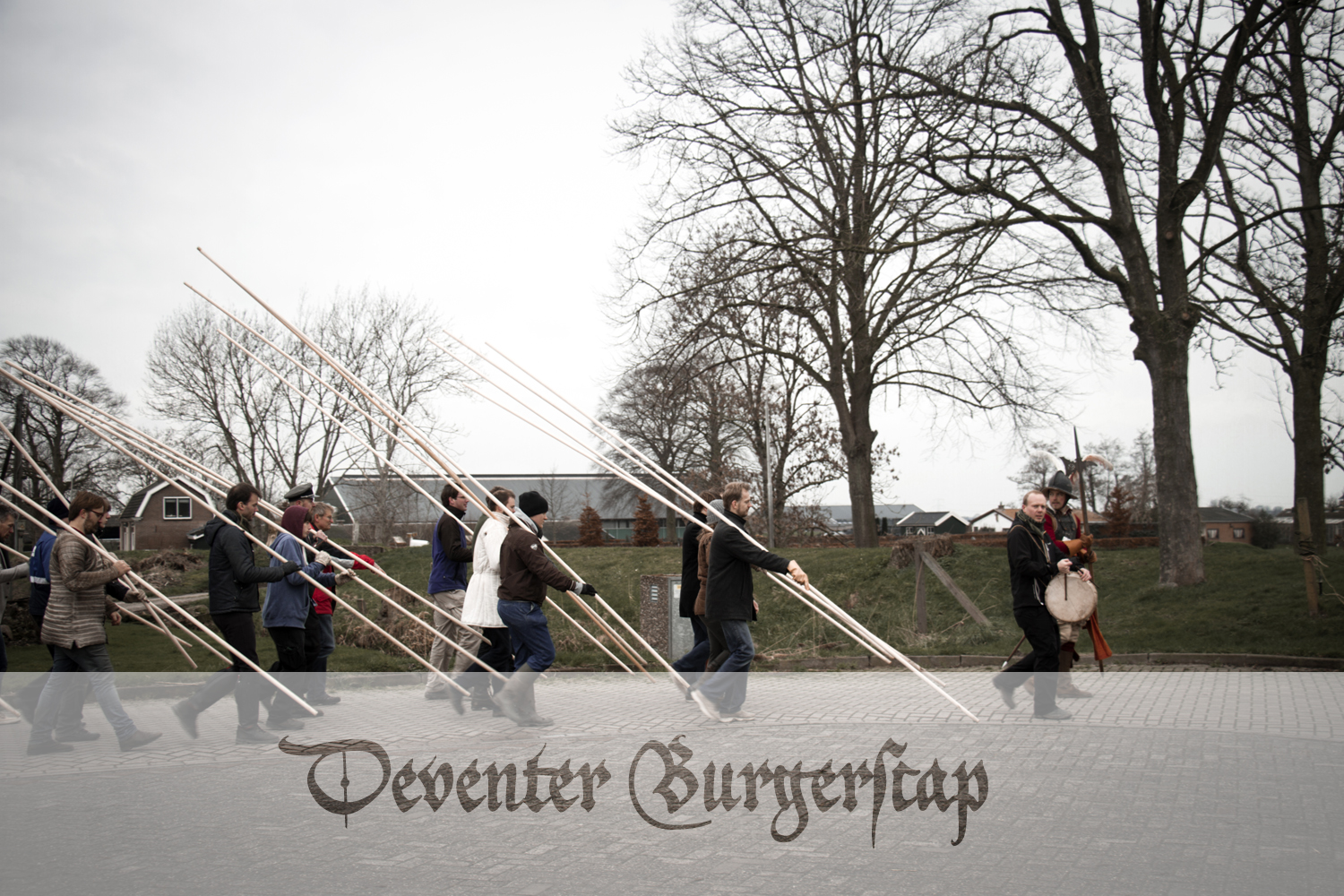Contrary to my previous blog-entries which were rather big, I now have a small update. I and my girlfriend Isis received our new pavilion! It is the tent that we have dreamt of since we started out in Deventer Burgerscap in 2004 and which we finally ordered with Medieval Market from Poland last autumn. A few weeks ago we put it up for the first time, underneath Huis Dever which is a c. 1375 knightly manor / tower. It is made of linen and is held aloft by two masts and guy ropes, so no hub and spoke system or other wooden support structure.
For this new tent we used a few sources, which are probably familiar to anyone who has looked into medieval tents during the past ten years. The first is a painting of 1330 in the Palazzo Publico in Siena depicting the siege of a castle. The fresco is called Guidoriccio da Fogliano all'assedio di Montemassi and is attributed to Simone Martini. There are two tents here, one with two masts and one with one mast. Both have ribbons, possibly black or blue, sewn to them in a vertical position. The second one is an extant early 17th century tent in the Historisches Museum of Basel. This has blue ribbons in a similar fashion and uses guy ropes to hold it up. The angle of the guy ropes on the Italian wall painting suggests that these depicted tents use the same system. Interestingly in a 1352 account of the bailiff of The Hague (residence of the counts of Holland), tents are mentioned which have repe blaeus (blue strips) sewn on them.
The Basel tent has its ropes end in crows feet and connect with the roof by means of iron hooks. We opted for the same suspension system with our new tent. It enables us to dry and store the ropes separately from the cloth, so the ropes wont accidentally rot. Also we wanted the walls to be detachable from the roof, something for which we have proof from at least the mid 15th century. In the future we will be putting nice copper finials on top of the tent, and curtains inside of it to give us some extra privacy. When the lord of Schoonhoven and Gouda, Jan van Blois, went on a crusade in the Baltic area in 1369, he ordered a load of rough linen fabric to section off a wardrobe inside his tent.
Here are some more pictures of the new tent. We think it looks marvelous!
For this new tent we used a few sources, which are probably familiar to anyone who has looked into medieval tents during the past ten years. The first is a painting of 1330 in the Palazzo Publico in Siena depicting the siege of a castle. The fresco is called Guidoriccio da Fogliano all'assedio di Montemassi and is attributed to Simone Martini. There are two tents here, one with two masts and one with one mast. Both have ribbons, possibly black or blue, sewn to them in a vertical position. The second one is an extant early 17th century tent in the Historisches Museum of Basel. This has blue ribbons in a similar fashion and uses guy ropes to hold it up. The angle of the guy ropes on the Italian wall painting suggests that these depicted tents use the same system. Interestingly in a 1352 account of the bailiff of The Hague (residence of the counts of Holland), tents are mentioned which have repe blaeus (blue strips) sewn on them.
The Basel tent has its ropes end in crows feet and connect with the roof by means of iron hooks. We opted for the same suspension system with our new tent. It enables us to dry and store the ropes separately from the cloth, so the ropes wont accidentally rot. Also we wanted the walls to be detachable from the roof, something for which we have proof from at least the mid 15th century. In the future we will be putting nice copper finials on top of the tent, and curtains inside of it to give us some extra privacy. When the lord of Schoonhoven and Gouda, Jan van Blois, went on a crusade in the Baltic area in 1369, he ordered a load of rough linen fabric to section off a wardrobe inside his tent.
Here are some more pictures of the new tent. We think it looks marvelous!























